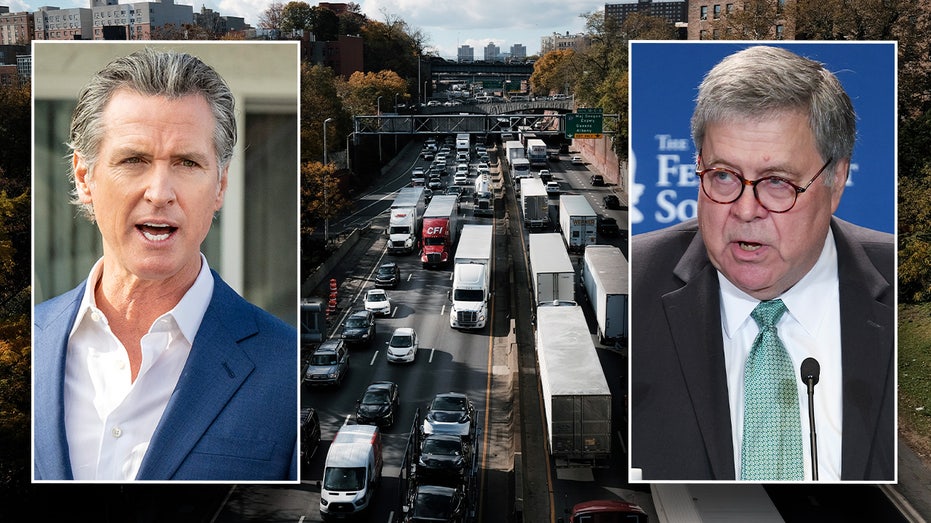The Triumph of Trump’s Anti-Migrant Cruelty
Consider the two following statements, and try to guess which political figures made them: “We need the federal government, the Congress members, the Senate and the president to do its job: close the borders.” “We want [Congress] to have a limit on who can come across the border. It is too open right now. People coming from all over the world are finding their way through.”Ted Cruz? Matt Gaetz? Maybe even Donald Trump, in one of his more cogent moments? Those would all be reasonable guesses. But in fact, the first statement was made on October 1 by Ingrid Lewis-Martin, chief adviser to New York City Mayor Eric Adams, while the latter came straight from the mouth of New York Governor Kathy Hochul on the very same day. Both are Democrats—and they’re hardly alone in their party when it comes to expressing increasingly restrictionist rhetoric.While Adams disavowed Lewis-Martin’s comments, the NYC mayor then embarked on a bizarre Latin America tour where he pointlessly beseeched would-be migrants not to travel to the United States; he has also claimed that the migrant issue “will destroy New York City.” Illinois Governor J.B. Pritzker, who’s garnered something of a cult following among online leftists, in a recent letter to Biden bemoaned “the federal government’s lack of intervention and coordination at the border.” Even Ohio Senator Sherrod Brown recently bragged in a campaign ad about crafting a bill to increase funding for Border Patrol (albeit not explicitly to counter migration).But the coup de grâce came from President Biden himself last week, with the announcement that his administration would be waiving over two dozen federal laws to pursue an expansion of the literal monument to Trump’s xenophobia: the border wall. That news marked the official death of the pro-immigrant consensus that solidified in mainstream Democratic circles (and blue cities especially) during the Trump administration—and it made clear that although Trump lost in 2020, his immigration policies have won out. We are living in Stephen Miller’s world now.It wasn’t that long ago that the idea of walling off the border, or that migrants were a destructive force, universally horrified Democrats. As the Trump administration waged war on immigration as a concept and a value, with a particularly intense and sadistic focus on asylum, taking a strong pro-immigrant stance was a no-brainer for Democrats across the country—many of whom took to the streets (and airports) to oppose to his acute depravity. As a candidate, Biden capitalized on this outrage by promising to end Trump’s cruel immigration policies, and on his first day in office reversed multiple immigration-related executive orders. Yet it quickly became clear that the antipathy to Trump’s legacy was a bit more about aesthetics and a bit less about substance.A first indication that the mainstream Democratic approach would come to settle into an asylum-skeptic groove was Biden’s continuation of the Title 42 program, which Miller—Trump’s anti-immigrant czar—had dreamed up. Biden’s embrace of the policy, which authorized the expulsion of would-be asylum-seekers without due process on the spurious grounds of protecting public health, came as a surprise to—and betrayal of—the immigrant advocacy community. And earlier this year, amid plans to finally phase out Title 42, Biden instituted his own version of a signature Miller anti-asylum policy requiring migrants to first apply for asylum in the countries they pass through on their way to the U.S.Meanwhile, Democrats have let the Republicans successfully bait them into having the immigration debate entirely on the right’s terms. While there’s no doubt that large, sometimes unprecedented numbers of migrants are arriving at the southern border, the “crisis” that everyone is actually talking about was effectively manufactured by a few Republican governors—Texas Governor Greg Abbott, in particular—who began busing migrants to New York, Washington, Chicago, and other Democratic-led cities in what became a self-reinforcing cycle, helped along by the federal government’s own inaction.As increasing numbers of people have arrived at the border seeking asylum, and are either literally or de facto funneled to blue or purple states and cities, these places’ Democratic elected leadership has turned away from their pro-asylum tenets at lightning speed, which was always part of Abbott et al’s long-term strategy. Biden has largely refused to use federal resources like the existing refugee resettlement infrastructure to help assimilate migrants and defray local costs, only compounding the political shift. Now Democrats who still oppose building a border wall are taking a much less forgiving position on the asylum system—a stance that resembles the pre-Trump Republican Party’s, while the GOP currently careens into open bloodlust.There’s a distinction here between asylum and other types of migration because, while some MAGA hard-liners have railed against even th

Consider the two following statements, and try to guess which political figures made them: “We need the federal government, the Congress members, the Senate and the president to do its job: close the borders.” “We want [Congress] to have a limit on who can come across the border. It is too open right now. People coming from all over the world are finding their way through.”
Ted Cruz? Matt Gaetz? Maybe even Donald Trump, in one of his more cogent moments? Those would all be reasonable guesses. But in fact, the first statement was made on October 1 by Ingrid Lewis-Martin, chief adviser to New York City Mayor Eric Adams, while the latter came straight from the mouth of New York Governor Kathy Hochul on the very same day. Both are Democrats—and they’re hardly alone in their party when it comes to expressing increasingly restrictionist rhetoric.
While Adams disavowed Lewis-Martin’s comments, the NYC mayor then embarked on a bizarre Latin America tour where he pointlessly beseeched would-be migrants not to travel to the United States; he has also claimed that the migrant issue “will destroy New York City.” Illinois Governor J.B. Pritzker, who’s garnered something of a cult following among online leftists, in a recent letter to Biden bemoaned “the federal government’s lack of intervention and coordination at the border.” Even Ohio Senator Sherrod Brown recently bragged in a campaign ad about crafting a bill to increase funding for Border Patrol (albeit not explicitly to counter migration).
But the coup de grâce came from President Biden himself last week, with the announcement that his administration would be waiving over two dozen federal laws to pursue an expansion of the literal monument to Trump’s xenophobia: the border wall. That news marked the official death of the pro-immigrant consensus that solidified in mainstream Democratic circles (and blue cities especially) during the Trump administration—and it made clear that although Trump lost in 2020, his immigration policies have won out. We are living in Stephen Miller’s world now.
It wasn’t that long ago that the idea of walling off the border, or that migrants were a destructive force, universally horrified Democrats. As the Trump administration waged war on immigration as a concept and a value, with a particularly intense and sadistic focus on asylum, taking a strong pro-immigrant stance was a no-brainer for Democrats across the country—many of whom took to the streets (and airports) to oppose to his acute depravity. As a candidate, Biden capitalized on this outrage by promising to end Trump’s cruel immigration policies, and on his first day in office reversed multiple immigration-related executive orders. Yet it quickly became clear that the antipathy to Trump’s legacy was a bit more about aesthetics and a bit less about substance.
A first indication that the mainstream Democratic approach would come to settle into an asylum-skeptic groove was Biden’s continuation of the Title 42 program, which Miller—Trump’s anti-immigrant czar—had dreamed up. Biden’s embrace of the policy, which authorized the expulsion of would-be asylum-seekers without due process on the spurious grounds of protecting public health, came as a surprise to—and betrayal of—the immigrant advocacy community. And earlier this year, amid plans to finally phase out Title 42, Biden instituted his own version of a signature Miller anti-asylum policy requiring migrants to first apply for asylum in the countries they pass through on their way to the U.S.
Meanwhile, Democrats have let the Republicans successfully bait them into having the immigration debate entirely on the right’s terms. While there’s no doubt that large, sometimes unprecedented numbers of migrants are arriving at the southern border, the “crisis” that everyone is actually talking about was effectively manufactured by a few Republican governors—Texas Governor Greg Abbott, in particular—who began busing migrants to New York, Washington, Chicago, and other Democratic-led cities in what became a self-reinforcing cycle, helped along by the federal government’s own inaction.
As increasing numbers of people have arrived at the border seeking asylum, and are either literally or de facto funneled to blue or purple states and cities, these places’ Democratic elected leadership has turned away from their pro-asylum tenets at lightning speed, which was always part of Abbott et al’s long-term strategy. Biden has largely refused to use federal resources like the existing refugee resettlement infrastructure to help assimilate migrants and defray local costs, only compounding the political shift. Now Democrats who still oppose building a border wall are taking a much less forgiving position on the asylum system—a stance that resembles the pre-Trump Republican Party’s, while the GOP currently careens into open bloodlust.
There’s a distinction here between asylum and other types of migration because, while some MAGA hard-liners have railed against even the so-called high-skill, work-based immigration system, both Democrats and the Chamber of Commerce–friendly Republican establishment remains at least putatively in favor of the overarching credo of legal immigration, whether that’s seasonal agricultural visas or the much-discussed H-1B specialized worker program. While it may seem superficially at odds with increasing animosity to the realities of asylum processing, it’s perfectly self-consistent if you parse out the key place where these programs differ.
That employment visas tie workers to employers in ways that restrict their movement within the economy and put them on precarious footing no matter how closely they try to comply with their requirements is tacitly seen as more of a feature than a bug. Like the refugee program, which is capped annually by the president and features lengthy and redundant security checks and application materials, what’s so appealing about these statuses is they promise and enforce a measure of control, both pre- and post-arrival in the U.S. It’s heavily managed migration, and for that idea to exist, so must the flip side of fortifying against unmanaged migration.
The asylum system, by intent and design, does not gel with this approach at all. The law itself requires people already to be on U.S. soil or at ports of entry to apply, puts them through an intentionally lenient credible fear interview—meant to weed out only clearly ineligible claims—and then gives them a chance to plead their case while living and working in the U.S. Sure, it wasn’t designed with anywhere near this volume of applications, but the principle that people would get to just show up and request protections, and that they’d be sheltered by the U.S. while these requests were evaluated, is not an accident nor an unexpected eventuality, no matter how often it’s discussed as some sort of loophole.
This is the asylum system working clunkily, to be sure, but as intended, as a system whose foundations are directly downstream from the guilt and lessons learned over the failure to protect would-be refugees during the Holocaust. It is rooted in the principle of protecting life and health as a default. But a number of Democratic leaders and policymakers who found easy political points and a feel-good moral stance in defending the system under Trump apparently feel today—under a Democratic president, as the logistics get tougher and the people keep coming—that this is more than they signed up for. What they want now is what the asylum system can’t offer: direct, political control of the outcomes.
And so the idea of support for asylum and humanitarian migration as a cardinal tenet of the Democratic Party has turned out to be fleeting, as the new bipartisan position becomes a restrictionist one. One can only imagine what the future consensus will be if Trump and Miller get another four years in the White House.



